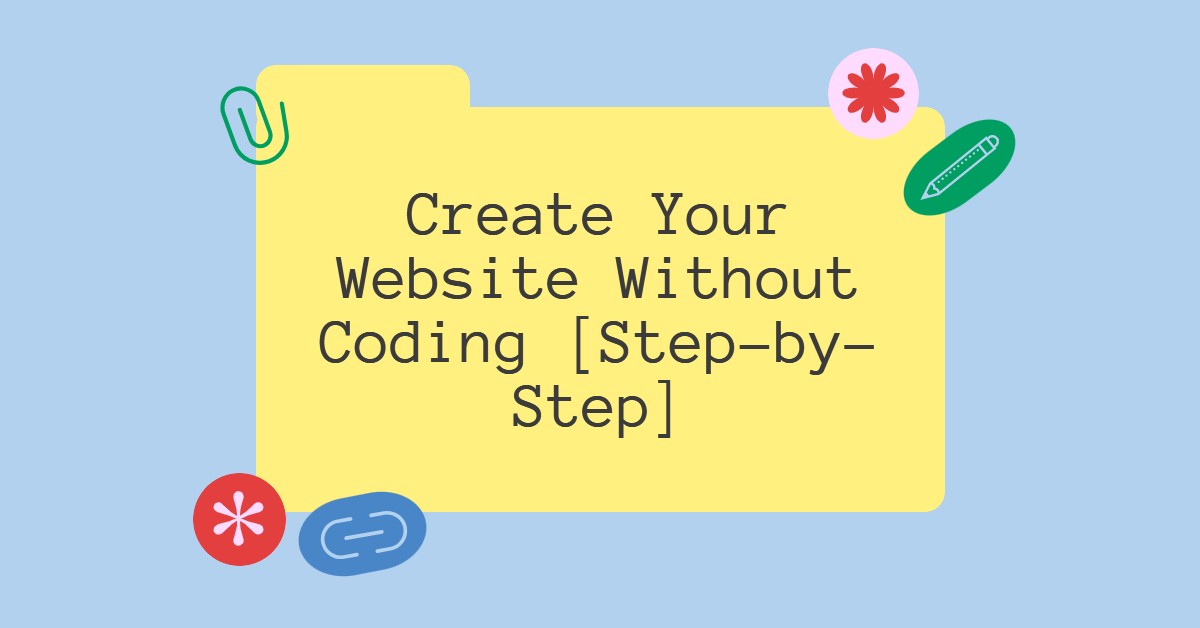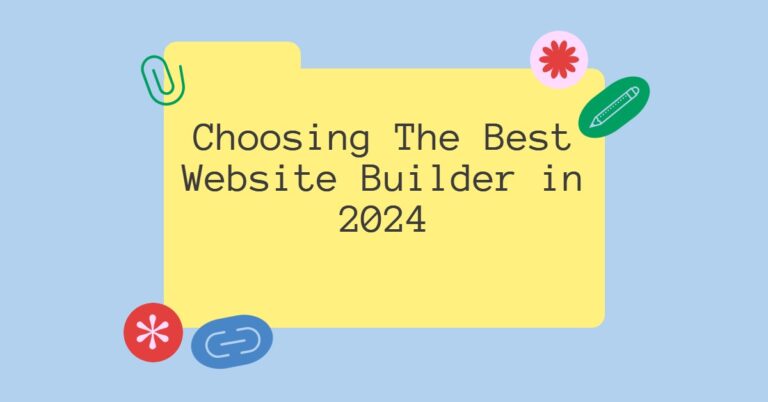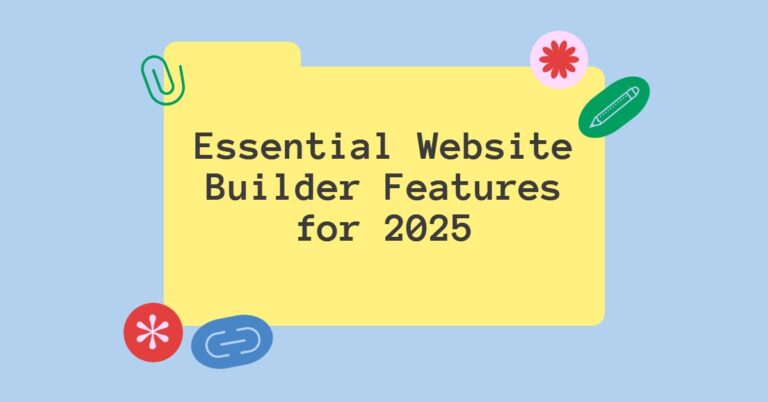Step-by-Step Guide to Building a Website Without Any Coding Skills: Your Easy Path to Online Presence

Creating a website might seem daunting if you lack coding skills, but it’s more accessible than ever. You can build a fully functional website using user-friendly tools and platforms designed specifically for beginners. This guide will walk you through the essential steps, ensuring that you can launch your online presence with confidence.
Many drag-and-drop website builders available today eliminate the need for complex coding. These platforms empower you to customize your site’s design and functionality using intuitive interfaces. Whether you want to create a personal blog, an online store, or a portfolio, you’ll find tools that make the process straightforward.
By the end of this guide, you’ll have a clear understanding of how to choose the right platform, select a template, and add content effectively. Get ready to transform your ideas into a live website without writing a single line of code.
Understanding the Basics of Web Development
Before you start building a website, it’s essential to grasp some foundational concepts. Key elements include understanding domains and hosting, planning your website’s purpose, and familiarizing yourself with web design principles. Each of these components plays a critical role in the overall functionality and success of your site.
Domains and Hosting
A domain is your website’s address on the internet, such as www.yoursite.com. To acquire a domain, you must register it through a domain registrar. Choose a name that reflects your brand, is easy to remember, and avoids complex spellings.
Hosting is the service that stores your website’s files and makes them accessible online. There are various types of hosting: shared, dedicated, VPS, and cloud. Shared hosting is cost-effective for beginners, while dedicated hosting is more powerful but pricier. Assess your needs and budget to select the right option.
Website Planning and Purpose
Before building your website, define its goals. Are you selling products, sharing information, or promoting a service? Understanding your audience is crucial for creating relevant content and engaging design.
Create a site map outlining the pages you need, such as Home, About, Services, and Contact. This blueprint will guide your design choices. Set clear objectives, like increasing traffic or generating leads, to evaluate your site’s effectiveness later.
Web Design Principles
Good web design enhances user experience and keeps visitors engaged. Focus on simplicity to make navigation intuitive. Use a clean layout with ample white space to avoid clutter.
Color schemes and typography are vital for visual appeal. Choose a palette that aligns with your brand and ensures readability. Aim for a mobile-responsive design, as many users access websites via smartphones. Incorporate call-to-action (CTA) buttons prominently to drive user interactions, such as signing up for newsletters or making purchases.
Choosing a Website Building Platform
Selecting the right website building platform is crucial for your project. It impacts ease of use, design flexibility, and functionality. Understanding different types of builders can help you make an informed choice.
Comparison of Website Builders
When comparing website builders, consider the primary options available: drag-and-drop builders, Content Management Systems (CMS), and e-commerce platforms.
| Platform Type | Ease of Use | Customization | Cost |
|---|---|---|---|
| Drag-and-Drop | Very User-Friendly | Limited | Low to Medium |
| Content Management | Moderate | High | Medium to High |
| E-commerce Platforms | Moderate to Difficult | Moderate | Medium to High |
Drag-and-drop builders are great for beginners, while CMSs like WordPress offer deeper customization options. E-commerce Platforms like Shopify excel for online stores.
Pros and Cons of Drag-and-Drop Builders
Pros:
- User-Friendly: Designed for beginners, these platforms require no coding knowledge.
- Quick Setup: You can build and launch a site in a short time.
- Templates Available: Pre-designed templates streamline the design process.
Cons:
- Limited Customization: Options can be restrictive compared to CMSs.
- Dependence on Platform: Your site is tied to the specific builder’s ecosystem.
- Scaling Issues: May not accommodate complex features as your site grows.
Exploring Content Management Systems
Content Management Systems (CMS) offer flexibility and scalability. WordPress is a prime example with a vast ecosystem.
Benefits of CMS:
- Customization: You can use plugins and themes for tailored functionality.
- SEO-Friendly: Many CMSs come with built-in SEO tools.
- Community Support: Popular CMSs have extensive forums and resources available.
Drawbacks:
- Steeper Learning Curve: More complex than drag-and-drop builders.
- Maintenance Required: Regular updates and security measures are necessary.
- Hosting Costs: You may need to manage hosting and domain registration separately.
Let’s Get Real About Templates and Design
Look, I get it – staring at hundreds of website templates can feel overwhelming. Here’s something most guides won’t tell you: you don’t need the fanciest template with all the bells and whistles. What you need is a template that loads fast and makes sense for your visitors.
I learned this the hard way after building dozens of websites – start with a clean, simple template that you can actually understand. Think of it like furnishing your first apartment. You don’t need everything at once; you can always add more features later.
The Truth About “Free” vs. Premium Templates
Here’s the deal with templates – free isn’t always cheaper in the long run. I’ve seen so many people get stuck with free templates that break easily or lack crucial features. But that doesn’t mean you need to spend a fortune either. Look for templates that offer:
- Regular updates (this is huge – outdated templates can break your site)
- Solid documentation (trust me, you’ll need this at 2 AM when something goes wrong)
- Built-in responsive design (because fixing mobile issues yourself is a nightmare)
- Basic customization options that actually make sense
The Non-Techie’s Guide to Making Your Site Look Professional
Let me share something that took me years to figure out: professional-looking websites aren’t about fancy effects – they’re about consistency. Here’s what actually matters:
Colors and Branding (Without Being a Designer)
Forget about trendy color schemes. Pick two main colors you like and stick to them. Seriously, that’s it. Use a tool like Coolors.co to find colors that work together, and use them everywhere. Consistency beats creativity when you’re starting out.
Images That Don’t Scream “Amateur”
You don’t need expensive photos to look professional. I’ve built hundreds of sites, and here’s what works:
- Use sites like Unsplash or Pexels for free, high-quality images
- Keep image sizes consistent (I use 1200px wide for headers, always)
- Stick to one style of images throughout your site
- Learn basic image compression (it’s easier than you think)
The Features You Actually Need (And Those You Don’t)
After years of building websites, I can tell you most beginners overcompicate things. Here’s what your first website absolutely needs:
Essential Features (Start Here)
- A clear way to contact you (a simple form works fine)
- About page (visitors want to know who’s behind the site)
- Mobile-friendly design (non-negotiable these days)
- Fast loading speed (people leave slow sites)
Features That Can Wait
- Complex animations (they often cause more problems than they’re worth)
- Chatbots (unless you’re actually available to chat)
- Pop-ups (yes, even though everyone says you need them)
- Social media feeds (they can slow down your site)
Maintaining Your Site Without Headaches
This is the part most guides skip, but it’s crucial. Your website needs regular maintenance, even if you’re not constantly adding new content. Here’s how to keep things running smoothly:
Monthly Maintenance Checklist
- Update your platform and any plugins (yes, every month)
- Check all your forms still work
- Test your site on different devices
- Back up your content (automated backups are worth every penny)
When Things Go Wrong (Because They Will)
Every website has issues sometimes. Here’s what to do:
- Keep a record of your login details in a secure place
- Know who to contact for technical help (have this before you need it)
- Understand your hosting company’s support system
- Keep a backup of your content somewhere offline
Future-Proofing Your Website
The web changes fast, but don’t let that scare you. Focus on building a solid foundation:
- Choose a widely-supported platform
- Keep your design simple and clean
- Document any customizations you make
- Save all your brand assets (logos, colors, fonts) somewhere safe
Remember, your first website doesn’t need to be perfect – it needs to be finished. You can always improve it later, and trust me, you will. The key is to start with the basics and build from there. I’ve seen too many people never launch because they’re chasing perfection. Don’t be that person – get your site up and running, then make it better over time.
The Real Truth About Website Speed (That Nobody Talks About)
Listen, website speed isn’t just some technical metric – it’s the difference between keeping and losing visitors. After building countless sites, I’ve discovered some speed tricks that most beginners never hear about:
Image Optimization Secrets
You know what kills most website speed? Those massive images you uploaded straight from your phone. Here’s what I do:
- Resize images BEFORE uploading (I use Squoosh.app – it’s free and works like a charm)
- Stop using PNG files for photos (JPG is your friend for photographs)
- If you’re showing product images, 800px width is plenty – anything larger is just wasting space
Content Delivery Networks (CDNs) Made Simple
Everyone talks about CDNs like they’re rocket science. They’re not. Think of them as coffee shops – the closer one is to your customer, the faster they get their coffee. Most good hosting companies include CDNs now. Turn it on. It’s usually just a toggle switch in your hosting dashboard.
Dealing with Mobile Design (The Stuff That Actually Matters)
Mobile design isn’t about making everything smaller – it’s about prioritizing what mobile users actually need. Here’s what I’ve learned works:
Mobile Navigation That Makes Sense
- Keep your menu items to 5 or fewer on mobile
- Make your phone number tap-to-call (just add “tel:” before your number in the link)
- Move your most important content to the top on mobile
- If you have forms, keep them short on mobile (nobody’s writing an essay on their phone)
The Truth About SEO For Beginners
SEO doesn’t have to be complicated. After helping dozens of beginners, here’s what actually moves the needle:
Basic SEO That Works
- Write titles that make sense to humans first
- Use headers (H1, H2, H3) to organize your content naturally
- Include your main topic in your URL (but keep it short)
- Write meta descriptions that make people want to click (think of them as mini-ads for your page)
Managing Your Website Long-Term (The Realistic Approach)
Let’s talk about what happens after your website is live. This is where most people struggle, but I’ve got some practical solutions:
Content Updates Without Headaches
- Create templates for your common content types (save them somewhere safe)
- Keep a swipe file of your commonly used images
- Set up a content calendar (even if it’s just a Google Doc)
- Take screenshots of your settings when something works well
Backup Strategies That Actually Work
Here’s my foolproof backup system:
- Weekly automated backups (your hosting should provide this)
- Monthly manual backups (just in case)
- Save your content in Google Docs before posting (this has saved me countless times)
- Keep a spreadsheet of all your passwords and important settings
Making Money From Your Website (The Honest Truth)
If you’re thinking about monetization, start with these basics:
Smart Monetization Strategies
- Don’t clutter your site with ads right away
- Start with one revenue stream and master it
- Test different ad placements with heatmaps (Hotjar has a free plan)
- Make sure your payment buttons are prominent and actually work
Growing Your Website (Without Losing Your Mind)
Growth doesn’t have to be complicated. Focus on:
Sustainable Growth Tactics
- Build an email list from day one (trust me on this)
- Create content that answers real questions (check Reddit and Quora for ideas)
- Make sharing your content dead simple
- Focus on getting better, not just bigger
Remember, building a website is a journey, not a destination. Start simple, learn as you go, and don’t be afraid to make mistakes. The worst website is the one you never launch because you’re waiting for it to be perfect.
And here’s my final piece of advice: document everything you learn. Create a simple Google Doc and write down the solutions to problems you solve. Future you will thank you for this, trust me.


